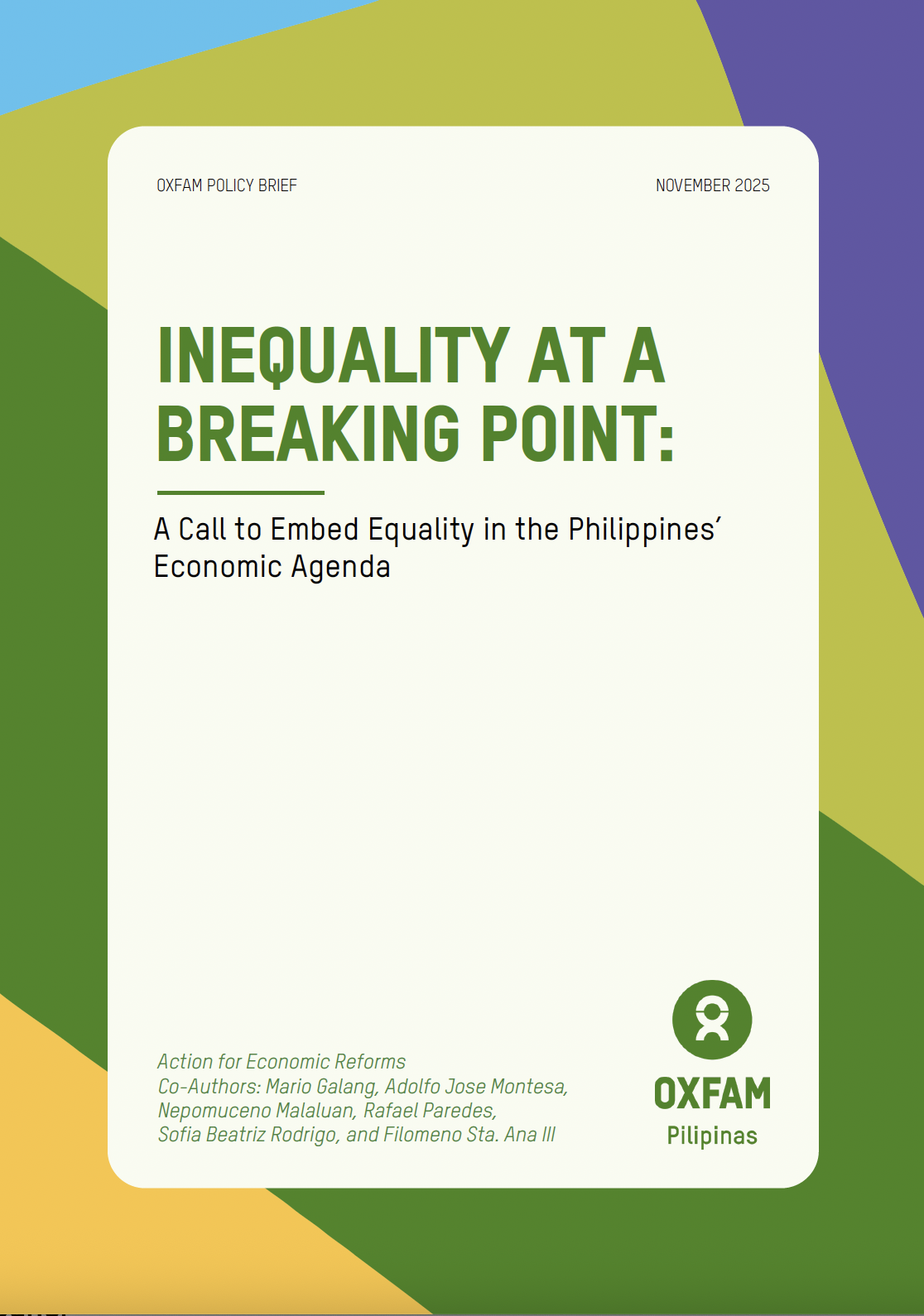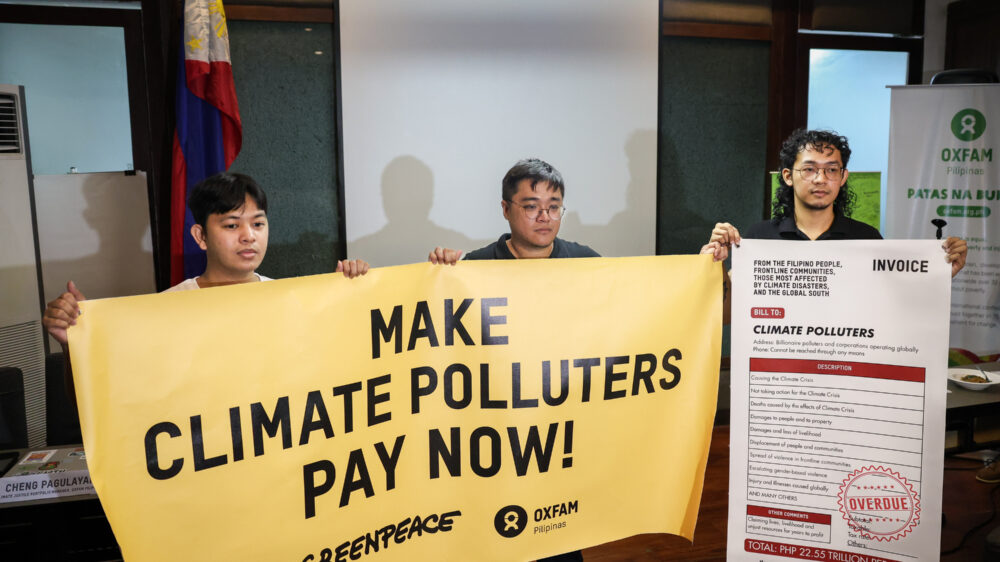A new study revealed that the economic, health, and education inequalities, compounded by the disasters and crises, are pushing Filipinos further into disparity. This deepening inequality positions the Philippines as the 15th most unequal country globally and with the starkest divide in Southeast Asia.
The study, titled “Inequality at a Breaking Point: A Call to Embed Equality in the Philippines’ Economic Agenda,” was launched by Oxfam Pilipinas and Action for Economic Reforms on November 18 in Quezon City.
Oxfam Pilipinas Executive Director Lot Felizco explained, “As millions recover from Super Typhoon Uwan and Filipinos rightly demand answers about flood-control projects that did not protect them, we must ask a harder question: why are disasters, public service failures, and a slowing economy hitting the same people hardest?”
“Inequality is not an academic problem—it decides who lives and who dies when disasters and crises hit. Inequality is a silent and worsening crisis that plagues the country. That’s why everyone should work together to address and end it urgently,” Felizco added.
According to the report, pursuing economic growth is not enough to close the inequality gap. “While high growth has contributed to poverty reduction in East Asia, the Philippine experience highlights that growth alone is insufficient without equitable access to opportunities and strong redistributive policies,” said Filomeno Sta. Ana III, executive director of Action for Economic Reforms.
The paper added that economic inequality persists in the country. Data from the Philippine Statistics Authority’s (PSA) Family Income and Expenditure Survey revealed that while the country’s Palma ratio—or the measure of inequality that compares the income of the highest 10% of the population against the poorest 40%—has been cut by more than half, much needs to be done as the richest 10% earned about 115% of the total income earned by the bottom 40% in 2023.
The paper critiques the conventional thinking of having economic growth as a primary strategy for reducing inequality. While high growth has contributed to poverty reduction in East Asia, the Philippine experience highlights that growth alone is insufficient without equitable access to opportunities and strong redistributive policies. To supplement the standard indicators, the paper incorporates alternative inequality measures, such as the Palma ratio, which further reveal the entrenched disparities between the wealthy elite and the lower-income segments of society.
The post-pandemic economic recovery was slower and fell short of government targets in 2023 and 2024. Recent forecasts revealed the same pessimistic outlook for 2025.
“With wages stagnating, the cost of goods rising, and stronger disasters frequenting the country, trying to remain afloat amid all these is such a challenge to most Filipinos,” Felizco stressed.
Out-of-pocket health spending is also driving people deeper into poverty and inequality in the country. The paper found that the Philippines ranks third-highest in out-of-pocket health spending in ASEAN, with households paying 45.5% of healthcare costs as of 2021, a 5.5% increase since 2000.
Registration and access to the National Health Insurance Program (PhilHealth) remain unequal, too. In the Bangsamoro Autonomous Region of Muslim Mindanao (BARMM), where poverty incidence is higher than the national average at 44.8%, only 52% of the population is registered with PhilHealth.
The report noted that the Philippines’ education outcomes lag. Its 2022 Programme for International Student Assessment (PISA) scores revealed that between 76% to 84% of students scored below the minimum proficiency in science, reading, and math.
Regional functional literacy rates also vary. Metro Manila ranked highest at 96.5%, while BARMM ranked lowest at 71.6%, according to the PSA’s Functional Literacy, Education and Mass Media Survey (FLEMMS) in 2019.
The paper added that economic barriers, health issues such as undernourishment, and underinvestment in education drive educational inequality. Insufficient income and the need to look for work force students to drop out. The educational system receives an average cumulative spending of USD 11,000 per student from age 6 to 15, nearly nine times less than that of OECD countries at USD 102,612.
The report recommended pursuing transformative reforms for sustainable, inclusive growth, such as transparency and accountability in public funds and projects, increasing revenues through progressive and efficient taxation, investing in education and training, and the full implementation of the Universal Healthcare Law with a focus on primary healthcare.
“Addressing multidimensional inequality should be a priority for the government and all institutions. We need to reorient policymaking and programs to address inequality in all its forms: promote not just economic growth but pillars of sustainable development, such as health and education,” Felizco added.
Download the report: Inequality at a Breaking Point: A Call to Embed Equality in the Philippines’ Economic Agenda
About Oxfam Pilipinas
Oxfam Pilipinas is a rights-based, feminist organization working toward an equal and just future for all. It is part of the Oxfam International confederation of 22 organizations networked together in over 70 countries.
For media inquiries, please email communications@oxfam.org.ph.




